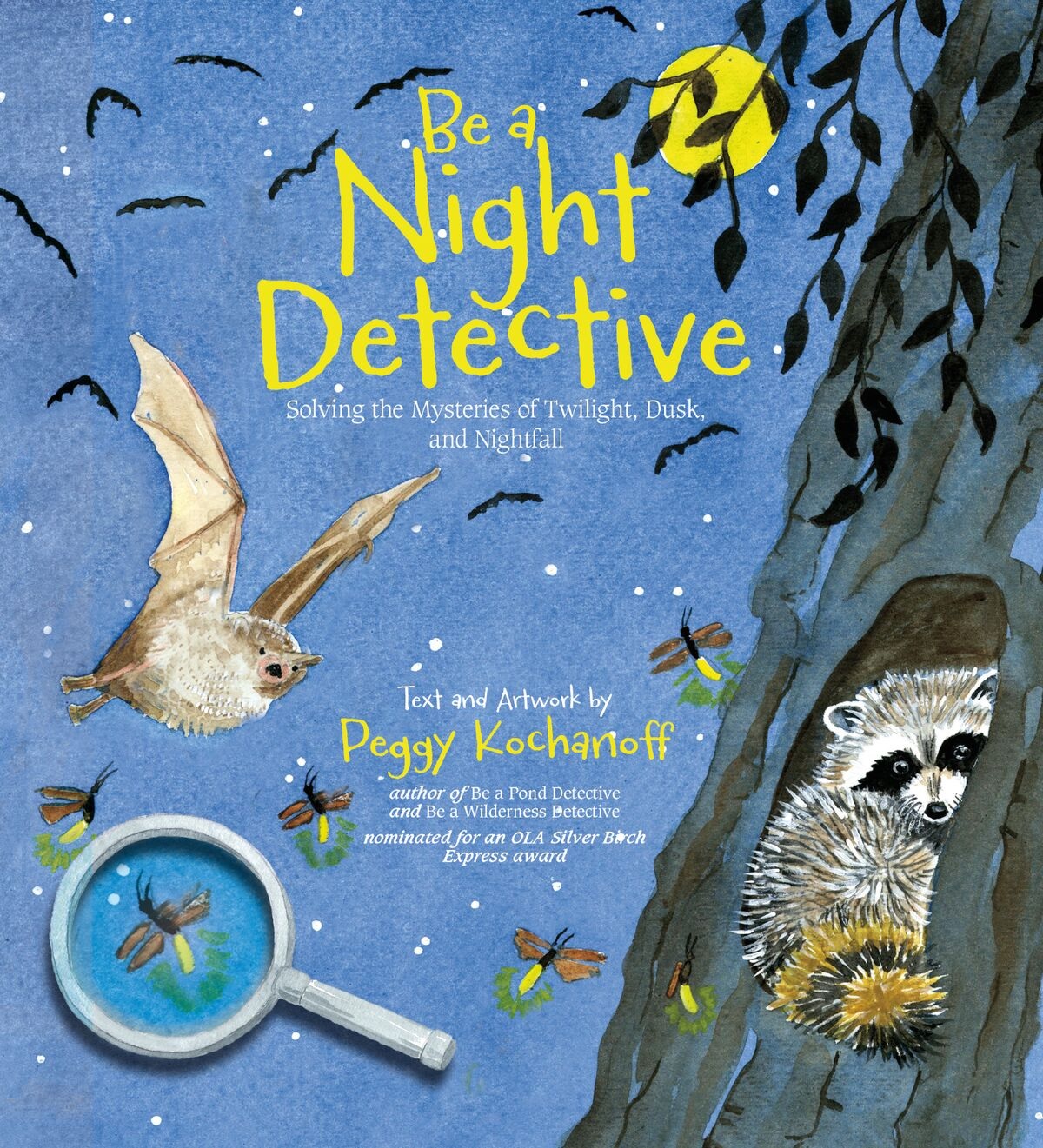| ________________
CM . . .
. Volume XXIV Number 12. . . November 24, 2017
excerpt:
Be a Night Detective: Solving the Mysteries of Twilight, Dusk and Nightfall is the fourth naturalist detective book from zoologist author/illustrator Peggy Kochanoff. While her previous works looked at ponds, beaches and wilderness, this volume covers the creatures and phenomena only seen after the sun goes down. The introduction provides useful information on how nocturnal animals see at night as well as how the human eye functions in the dark. Young readers are encouraged to look “to the edge of your eyes at night” to improve night vision and to also utilize the book’s glossary if any terms prove confusing. Kochanoff highlights 16 simple questions about plants, animals, insects and the night sky including: Are bats dangerous? Why do coyotes howl? Why do moths fly at night? Why do owls hunt at night? How do you find star pictures in the night sky? What causes the Northern Lights? With the book’s being published in Nova Scotia, Kochanoff references the Maritime provinces at one point, and her questions and answers have a northeastern North American focus, featuring common wildlife, such as moths, skunks, raccoons, June bugs, cicadas, bats and owls. Each question is conversational in tone, “Hmmm…why do frogs and toads call during the night?”, and is followed by a one or two-page spread including the answer and an accompanying illustration or diagram. Kochanoff’s answers for each question strike a nice balance; the science is not “dumbed down”, and it includes scientific facts but at an accessible reading level that will not leave young readers confused.
Difficult terms, such as enzyme, are featured in bold text and explained in the glossary at the end of the book. Kochanoff’s watercolor illustrations are charming and give this nonfiction title its picture book feel, ensuring that young readers will select it both for academic science project work as well as for pleasure reading. The extra content at the back of the book, the glossary and listings of books, magazines and websites for further research, will prove useful in the classroom and school library. A table of contents or index would have been a nice addition to Be a Night Detective so that readers could flip to a certain animal or specific question, or for those readers who prefer to dip in and out. Regardless, Kochanoff has once again crafted a work that belongs in all elementary classroom and school libraries as well as on the bookshelves of young naturalists. Recommended. Cate Carlyle is a former elementary teacher currently residing in Nova Scotia where she is a librarian at Mount Saint Vincent University. She now knows that flying squirrels do not actually fly.
To comment
on this title or this review, send mail to cm@umanitoba.ca.
This Creative Commons license allows you to download the review and share it with others as long
as you credit the CM Association. You cannot change the review in any way or use it commercially. Commercial use is available through a contract with the CM Association. This Creative Commons license allows publishers whose works are being reviewed to download and share said CM reviews provided you credit the CM Association.
Next Review | Table of Contents For This Issue - November 24, 2017 |
